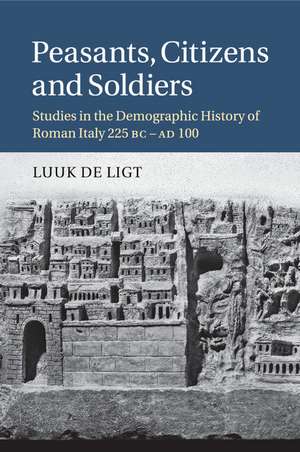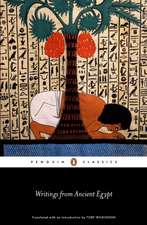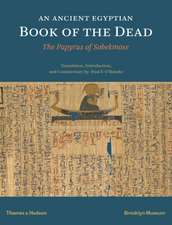Peasants, Citizens and Soldiers: Studies in the Demographic History of Roman Italy 225 BC–AD 100
Autor Luuk de Ligten Limba Engleză Paperback – 8 apr 2015
| Toate formatele și edițiile | Preț | Express |
|---|---|---|
| Paperback (1) | 323.05 lei 6-8 săpt. | |
| Cambridge University Press – 8 apr 2015 | 323.05 lei 6-8 săpt. | |
| Hardback (1) | 760.82 lei 6-8 săpt. | |
| Cambridge University Press – 4 apr 2012 | 760.82 lei 6-8 săpt. |
Preț: 323.05 lei
Nou
Puncte Express: 485
Preț estimativ în valută:
61.81€ • 64.71$ • 51.15£
61.81€ • 64.71$ • 51.15£
Carte tipărită la comandă
Livrare economică 05-19 aprilie
Preluare comenzi: 021 569.72.76
Specificații
ISBN-13: 9781107519121
ISBN-10: 1107519128
Pagini: 408
Ilustrații: 2 maps 11 tables
Dimensiuni: 152 x 229 x 21 mm
Greutate: 0.54 kg
Editura: Cambridge University Press
Colecția Cambridge University Press
Locul publicării:New York, United States
ISBN-10: 1107519128
Pagini: 408
Ilustrații: 2 maps 11 tables
Dimensiuni: 152 x 229 x 21 mm
Greutate: 0.54 kg
Editura: Cambridge University Press
Colecția Cambridge University Press
Locul publicării:New York, United States
Cuprins
1. Evidence, theories and models in Roman population history; 2. The Polybian manpower figures and the size of the Italian population on the eve of the Hannibalic War; 3. Census procedures and the meaning of the republican and early-imperial census figures; 4. Peasants, citizens and soldiers, 201 BC–28 BC; 5. The Augustan census figures and Italy's urban network; 6. Survey archaeology and demographic developments in the Italian countryside.
Recenzii
'… this is an impressive work of scholarship. It provides a fresh and insightful analysis of the key evidence upon which the debates over the size of the Italian population are based. As well as revising existing theories surrounding the key issues, De Ligt provides a number of thought-provoking comments and analyses throughout which will surely stimulate further debate on a long-standing subject.' Bryn Mawr Classical Review
'There is no doubt that this is an important book, one that every social and economic historian of pre-modern Europe should familiarize themselves with, whatever their period of specialization. All the more so for the ancient historian, to whom the book is explicitly addressed … this book offers a thorough, sophisticated analysis of one of ancient history's most intractable problems, an 'academic battleground' where de Ligt takes sides, elegantly providing new ammunition to his field. The 'low count' should now be renamed as the Beloch-Brunt-de Ligt theory, inasmuch as the book here under review offers a more nuanced reading and addresses successfully some of the more evident weaknesses of the old version of the 'low count' theory.' Marco Maiuro, Sehepunkte
'There is no doubt that this is an important book, one that every social and economic historian of pre-modern Europe should familiarize themselves with, whatever their period of specialization. All the more so for the ancient historian, to whom the book is explicitly addressed … this book offers a thorough, sophisticated analysis of one of ancient history's most intractable problems, an 'academic battleground' where de Ligt takes sides, elegantly providing new ammunition to his field. The 'low count' should now be renamed as the Beloch-Brunt-de Ligt theory, inasmuch as the book here under review offers a more nuanced reading and addresses successfully some of the more evident weaknesses of the old version of the 'low count' theory.' Marco Maiuro, Sehepunkte
Descriere
This book re-assesses the military, social and economic history of Roman Italy from the angle of population history.
















